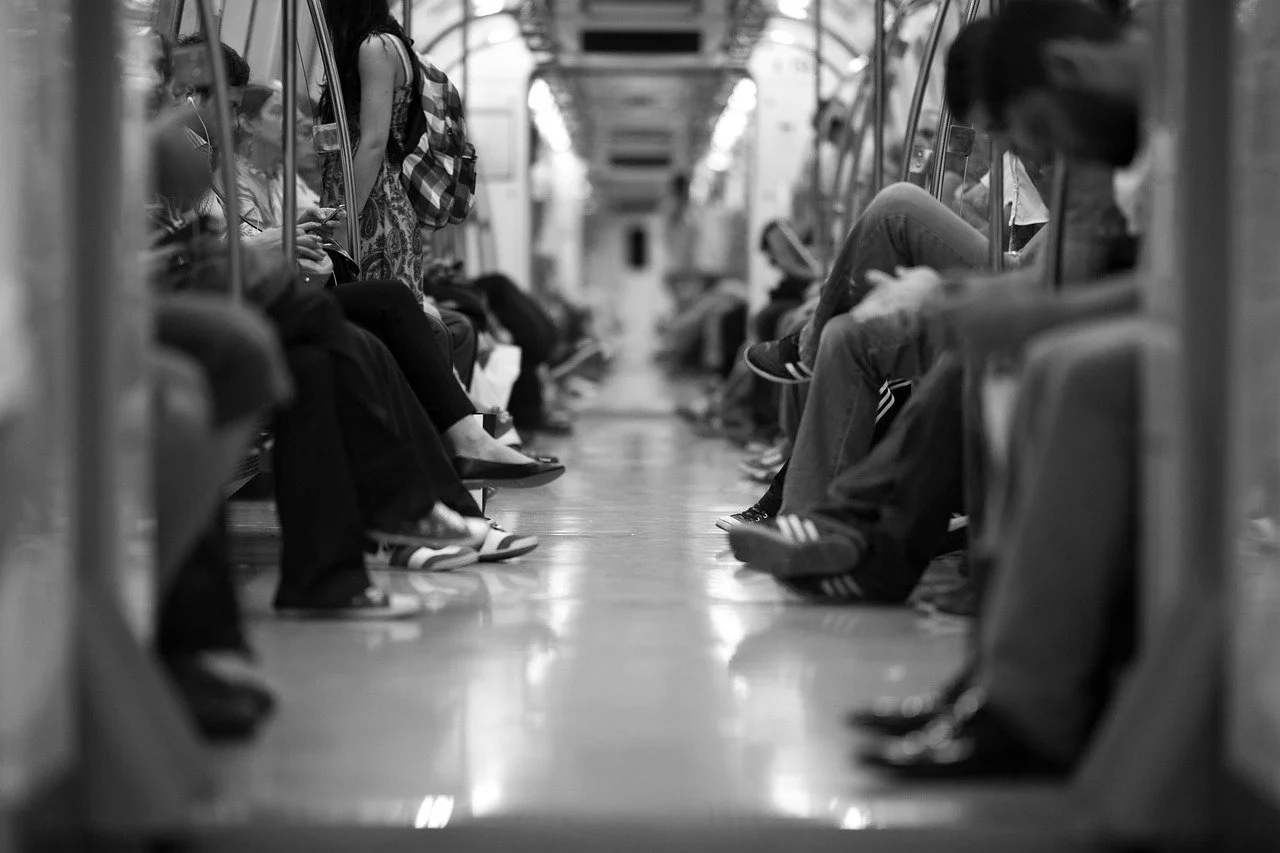The Basics of the Gray Man Concept: Why Being Invisible Matters and How to Read a Crowd
Gray Man blending into urban crowd
In a world where information spreads instantly and attention to detail can be both an advantage and a threat, the Gray Man concept takes on special significance. It is an approach to behavior and appearance in which a person blends seamlessly into their surroundings, avoiding unnecessary attention. The goal is to remain "invisible" in a crowd to avoid unwanted contact, reduce risks, and maintain control over the situation.
Today, this topic is more relevant than ever: from traveling to unfamiliar countries and crossing borders to being in large cities or attending mass events. In crisis situations, when panic or aggression can spread rapidly, the ability to remain unnoticed and accurately read crowd behavior can preserve safety and even save lives.
This article will help you understand the fundamentals of the Gray Man concept, explain why invisibility can be a strategic advantage, and provide practical advice on how to adapt this tactic in everyday life. We will also explore how to analyze the behavior of people around you to identify potential threats in time and act wisely.
This video presents the podcast version of this article.
What Is the Gray Man Concept
The term Gray Man describes a person who can remain unnoticed in any environment by blending into the background. It is not about the literal color of clothing, but about behaving in a way that does not attract interest or suspicion from others. Such a person does not stand out in appearance, manner of movement, or behavior, yet retains full control over their actions and the situation.
The origins of the concept are linked to military and intelligence practices. In special services and the armed forces, the ability to "disappear" among civilians or in hostile environments is often a matter of survival. Over time, these principles began to be applied in civilian life-first among security personnel, private investigators, and journalists working in dangerous regions, and eventually among ordinary people seeking to enhance their personal safety.
The core idea of the Gray Man is to merge with the environment and minimize any signals that might draw attention. This applies to appearance, body language, behavior, and even one's digital footprint. The goal is to avoid unwanted interest while remaining a vigilant observer, ready to respond quickly to changes in the situation.
Why Being Invisible Matters
Being unnoticed is not about fear or avoiding the world-it is about consciously controlling the attention you attract. In many situations, the absence of unnecessary interest in you can be the key to safety and freedom of action.
Safety in crisis situations. During natural disasters, mass unrest, or other emergencies, crowds often act chaotically, and aggression or panic can spread instantly. A person who does not stand out has a better chance of avoiding conflict, not becoming a target for aggressive individuals, and calmly leaving a dangerous area.
Travel and border crossings. When traveling internationally, invisibility helps reduce the likelihood of additional checks by border guards or customs officers. A neutral appearance, calm demeanor, and confident yet unobtrusive answers to questions lower the risk of delays and unnecessary suspicion.
Urban environments. In large cities, especially in tourist areas, thieves and scammers often look for "visible" targets-people with expensive accessories, bright clothing, or behavior that signals inattention. A restrained style and awareness of your surroundings reduce the risk of becoming a victim of theft or fraud.
Real-life examples. There are many cases where invisibility has saved lives. For example, during evacuations in conflict zones, those who did not attract attention reached gathering points more quickly and safely. Travelers who avoided displaying valuables were less likely to fall victim to pickpockets in crowded places.
Being "invisible" is not about giving up your individuality-it is a strategic choice that allows you to remain safe while preserving your freedom of movement and action.
How to Read a Crowd
The ability to "read" a crowd is one of the key skills for those who follow the Gray Man principles. It allows you not only to remain unnoticed but also to detect potential threats in time and make safe decisions.
Observing people's behavior. Careful yet discreet observation helps assess the overall emotional tone of a group. Pay attention to body language: tense shoulders, quickened movements, aggressive gestures, or raised voices may signal rising tension. Conversely, relaxed postures, steady walking pace, and calm expressions indicate a stable situation.
Identifying potential threats. In a crowd, it is important to quickly notice "anomalies"-people behaving differently from the majority. These could be aggressive groups, individuals scanning their surroundings intently, or those trying to hide their faces or hands. Such signs may indicate possible danger.
Choosing a safe position. Your location in a space matters. The safest place is on the periphery of the crowd, where you can quickly move away or change direction. Avoid getting trapped in "bottlenecks"-near walls, in corners, or narrow corridors where maneuvering is difficult. If the situation escalates, move calmly toward the nearest exit without drawing attention.
Crowd psychology. In stressful situations, people often act impulsively, imitating the behavior of others. Panic can spread faster than you can process it. Understanding this helps you maintain your own composure and avoid succumbing to collective emotions. Self-control and the ability to think rationally in such conditions are among the main advantages of the Gray Man.
Mastering these skills allows you not only to avoid danger but also to remain "invisible" even in the most dynamic and unpredictable conditions.
Neutral clothing for Gray Man strategy
Practical Tips for the Gray Man
To effectively apply the Gray Man concept in everyday life, it is important to combine several key elements-from appearance to digital behavior. These tips will help you stay unnoticed while maintaining confidence and control over the situation.
Clothing and appearance. Choose neutral colors-gray, navy blue, beige, black, or olive. Avoid bright shades, large logos, and accessories that might attract attention. Clothing should be comfortable, appropriate for the local style and weather, so you appear natural in your surroundings.
Body language. Keep an upright posture, move confidently but without abrupt or demonstrative gestures. Avoid aggressive stances or excessive fidgeting. Calm, measured movements and a composed facial expression will help you blend into the crowd without arousing suspicion.
Using your surroundings. Observe how people around you behave and adapt your actions to the general rhythm. If everyone is moving quickly, match their pace; if most are standing or waiting, do the same. Use architecture, traffic flow, and groups of people to stay in the background and avoid open, exposed positions.
Minimizing your digital footprint. In the digital age, invisibility applies not only to physical space. Limit the sharing of personal information on social media, avoid geotagging, and refrain from oversharing plans. Use secure communication channels and check privacy settings on your devices.
Following these principles will help you remain "invisible" in any environment while preserving your freedom of movement and the ability to respond quickly to changes in the situation.
Common Mistakes
Even when people understand the principles of the Gray Man, many make mistakes that undermine their efforts to remain unnoticed. To avoid this, it is worth knowing the most common pitfalls and correcting them in time.
Excessive suspicion. Constantly looking over your shoulder, nervous movements, or being overly cautious can attract more attention than calm, confident behavior. People instinctively notice those who seem "different," and suspicious gestures can draw interest or even suspicion from bystanders or security personnel.
Wearing overly "tactical" clothing or gear. Camouflage, military backpacks, body armor, or an excessive amount of equipment signal preparedness and can make you stand out in a crowd. In a civilian environment, this looks unnatural and contradicts the main idea-blending in with your surroundings.
Behavior inconsistent with the environment. Acting differently from the majority around you is immediately noticeable. For example, in a place where everyone is talking and interacting, complete isolation and avoiding eye contact may seem strange. Likewise, being overly active in a calm environment will draw unwanted attention.
To avoid these mistakes, remember: the Gray Man is not about displaying preparedness or suspicion-it is about naturalness, adaptability, and harmoniously blending into your surroundings.
FAQ - Frequently Asked Questions About the Gray Man Concept
Q: Is the Gray Man concept suitable for everyday life?
A: Yes. Elements of this concept can be applied daily-while traveling, at work, on public transportation, or when attending mass events. It helps reduce risks and maintain personal safety without unnecessary effort.
Q: Does the Gray Man concept mean avoiding communication?
A: No. The concept does not promote complete isolation. It is about controlling the attention you attract and knowing how to interact with others in a way that allows you to remain "in the shadows" when necessary.
Q: Can the Gray Man concept be combined with other security approaches?
A: Yes. This concept integrates well with prepper strategies, bug‑out plans, personal evacuation plans, and other safety measures. It complements them by adding an element of invisibility and adaptability.
Q: Does the Gray Man concept work in the digital environment?
A: Yes. The principles can also be applied online-for example, by minimizing personal information shared on social media, limiting geotags, and using privacy settings. In the digital age, "invisibility" applies not only to the physical world but also to your online presence.
Conclusion
The Gray Man concept is not about living in constant fear or abandoning your individuality. It is about consciously controlling how you are perceived by others and managing your visibility according to the situation. This approach allows you to maintain freedom of action, avoid unwanted attention, and enhance your personal safety in any environment.
It is important to remember that applying the principles of the Gray Man should be done responsibly. This is a tool to help protect yourself and those around you, not a means for manipulation or breaking the law. Adhering to ethical standards and common sense is key to making this strategy work in your favor.
The primary goal of the Gray Man is safety and adaptability. The ability to remain unnoticed, quickly assess situations, and make informed decisions provides an advantage in a world where circumstances can change instantly. By applying these principles, you can feel confident both in familiar surroundings and in new, unpredictable environments.
Disclaimer
The information provided in this article is for informational and educational purposes only. It is not an encouragement to engage in any illegal activities, disrupt public order, or interfere with the operations of governmental or private entities.
Before applying the advice or techniques described in real life, always take into account the laws of the country you are in, as well as the specific circumstances of the situation. Remember that the
Looking for more? Check out our other pieces on gray man, bugout, and prepper skills
The Psychology of the Gray Man: How to Disappear in a Crowd
How to Disappear Without a Trace: Safety Techniques
Communication Without a Trace: How to Avoid Compromise
Stealthy Movement Routes - How to Plan Paths for Avoiding Danger
How to Stay Safe While Working in Your Browser









